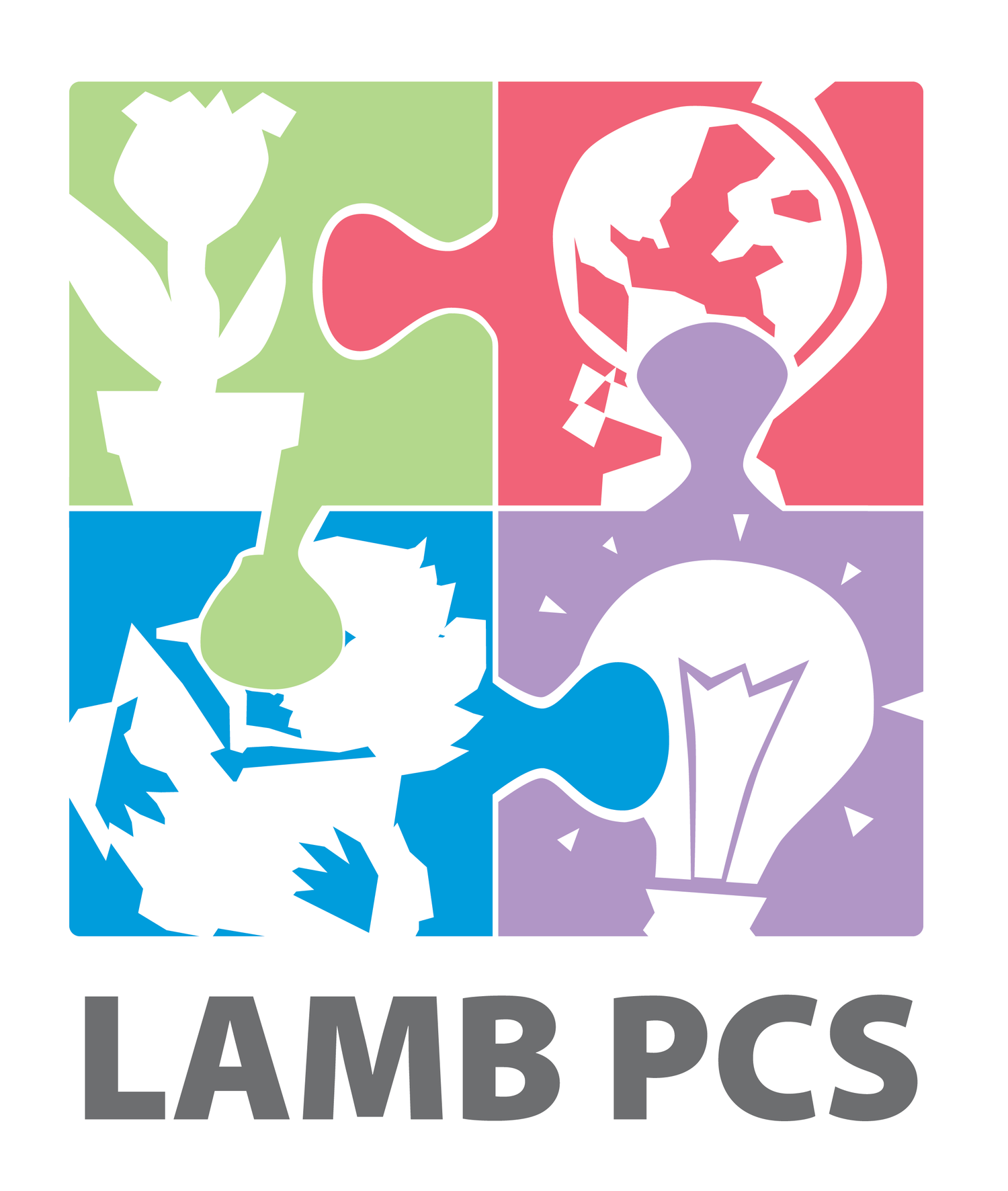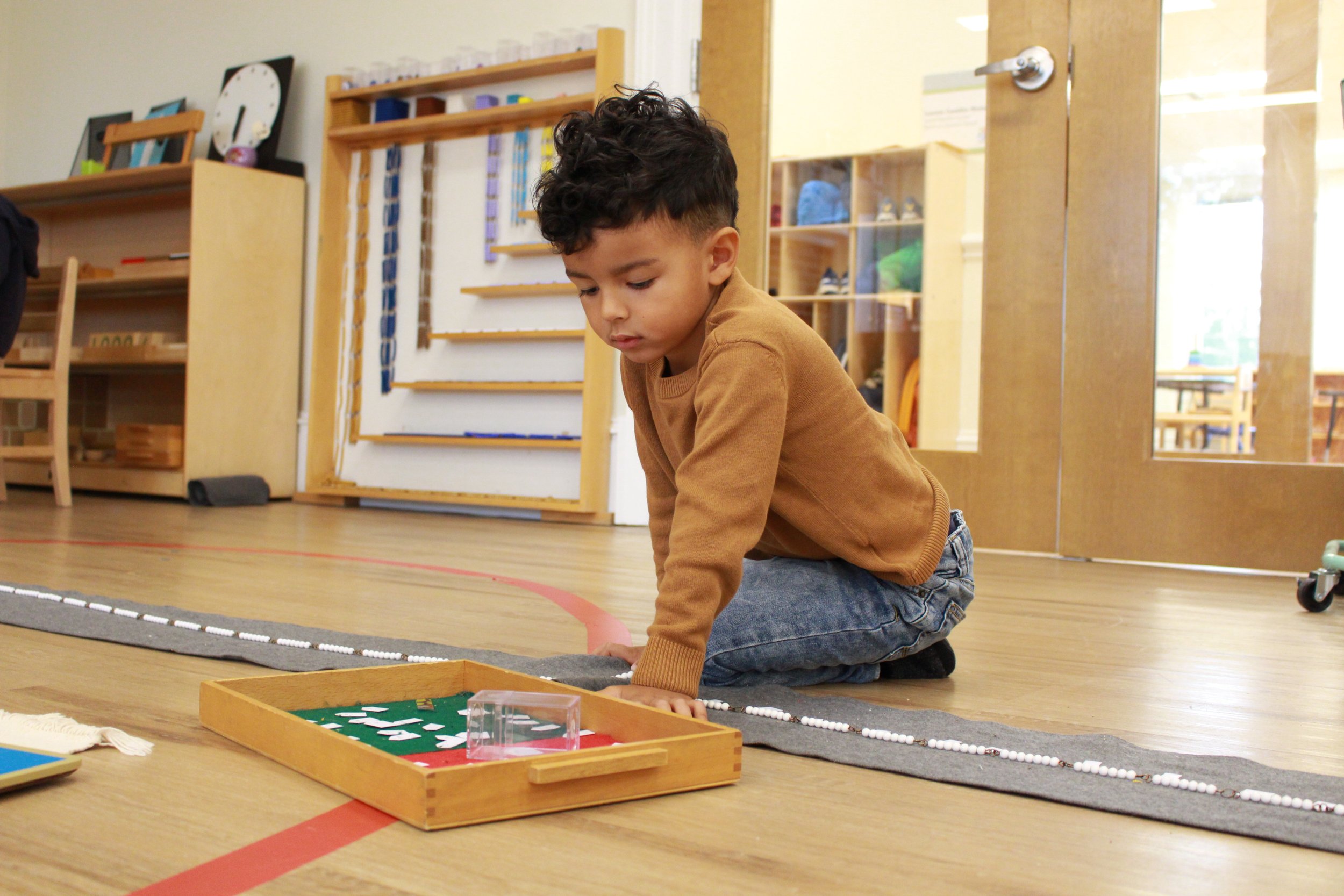
“The greatest development is achieved during the first years of life, and therefore it is then that the greatest care should be taken.”
LAMB has nine Primary communities, serving students ages three to six in grades PK3, PK4, and Kindergarten. Our classrooms, also known as communities are called Azteca, Cherokee, Maya, and Taino, named for native people of the Americas and the Caribbean, and the Luna (moon), Aire (air), Agua (water), Tierra (earth), and Sol (sun).
Primary Structure and Work Cycle
In Primary, the entire community environment supports the child’s learning. Primary communities are organized into practical life, sensory, and academic areas where they can explore and learn interacting freely within their environment. Students engage in a combination of individual and small- and large-group work during the Montessori work cycle. The work cycle is an uninterrupted block of time during which students are free to select what they want to work on. During this time, teachers observe the students and give them lessons, individually or in small groups. The morning cycle is completely Spanish immersion.
Students also learn from each other. Younger children are often eager to imitate older classmates as they explore the environment. As they do this, they practice and master many skills. A snack table with fruits, vegetables, and other healthy foods is available for children to eat when they feel hungry. Primary communities also participate in Art, Music, and Physical Education classes with teacher specialists.
In PreK3, students learn how to follow the Montessori work cycle, become adjusted to being at school, and develop basic skills that lay the foundation for more advanced work. Older students move through the environment with guidance, exploring complex math, language, science, and geography work stations.
The Montessori teachers guide and assist in classroom activity. Each community is served by two bilingual Montessori teachers and by a classroom assistant who speaks primarily in Spanish. In addition, special education teachers work with students with disabilities who have Individualized Education Plans (IEP).
Schedule
Class starts at 8:30 a.m. Primary students can enter the classroom starting at 8:20 a.m.
They then begin their first work cycle which is in Spanish. During this time, children may eat at the snack table, work independently or in groups, and receive lessons. There is also a “circle activity” at either the start or end of the work cycle, where students gather in a circle and review the calendar, weather, receive lessons in grace and courtesy, among other activities.
Lunch and recess follow the morning work cycle.
After lunch and recess, PreK3 and some PreK4 students nap while Kinder students have a work cycle focused on English language literacy.
Class is dismissed at 3:00 p.m.
LAMB offers an after-school program for a fee. The program runs from 3:00 p.m. until 6:00 p.m.
After Kindergarten, students move up to Lower Elementary.

Community Size
Maria Montessori's philosophy and practice is that children learn best from each other. For this reason, she built a model where the ideal class size is between 24 and 32 children so that children will turn to each other instead of only to the teachers. LAMB follows this model. Our communities have from 24 to 27 students.



